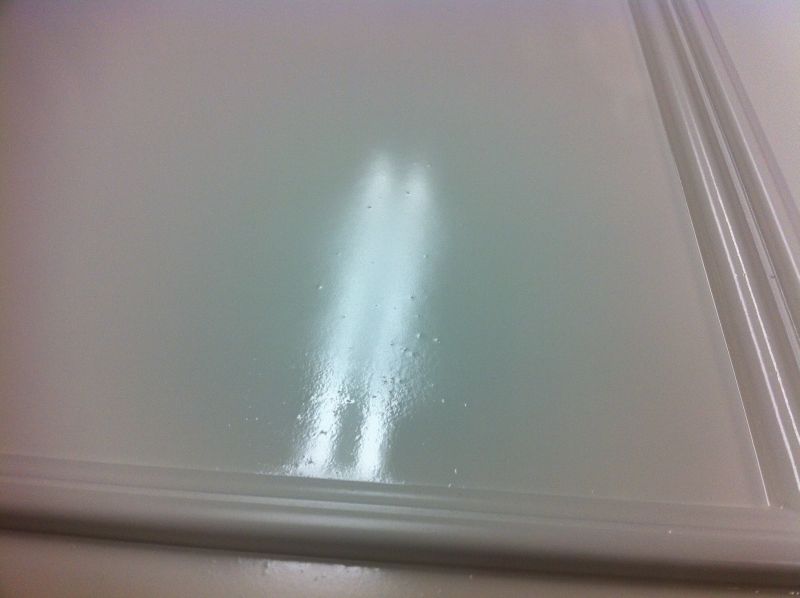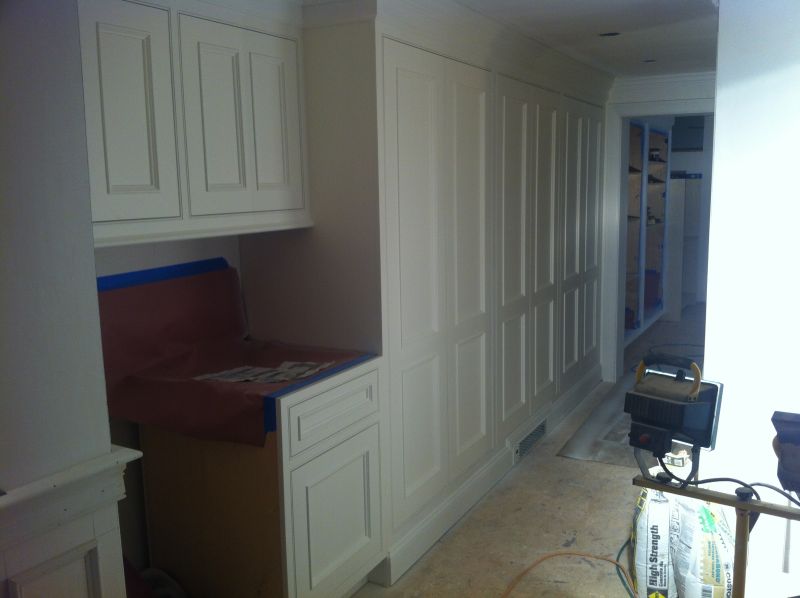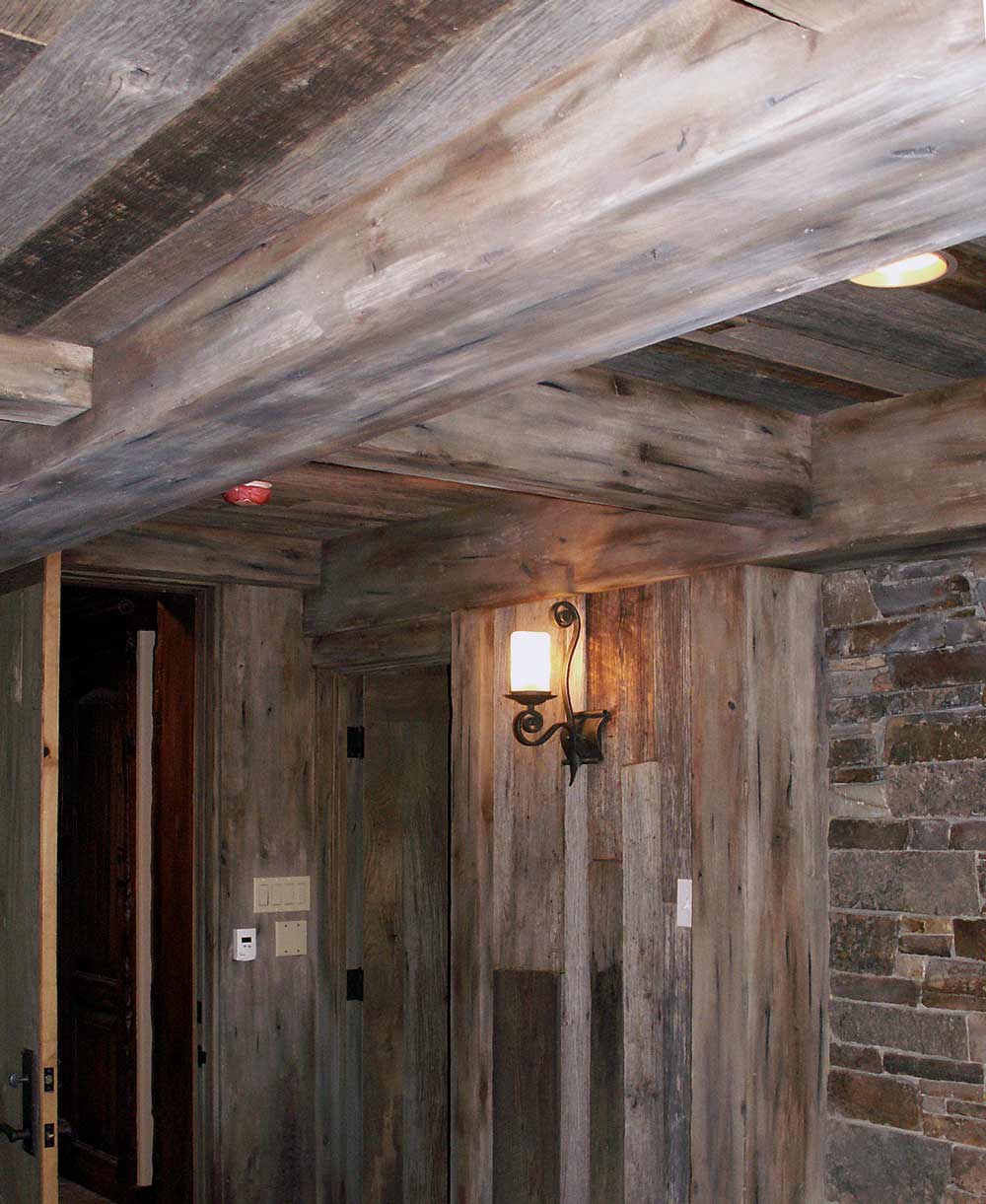Troubleshooting a Bumpy Finish with Post-Cat Lacquer
Small surface bumps might be the result of solvent pop. January 24, 2014
Question
I made a switch from pre-cat to post-cat lacquer. This is the first time using it and I am getting nothing but little bumps in the surface. It almost looks like dust but I think it may be air bubbles. Iíve tried everything to get rid of it but nothing is working. What is causing this problem?
Forum Responses
(Finishing Forum)
From contributor X:
Usually too much air pressure is the cause. I would try that before you start adding retarders and flow enhancers.
From the original questioner:
I have slowed the air flow and received the same results. I tried using retarder and it only helped slightly. The finished surface is not acceptable and feels like sand paper. Can the catalyst cause this problem?
From the original questioner:
This is what it looks like.

Click here for higher quality, full size image
From contributor F:
I'm not familiar with Becker products so I can only comment in general terms. Most of the time when I see this in post-cat products it's from bits of material left on the surface from the scuff sanding process, stuff that may normally melt in with a pre-cat does not re dissolve with a post cat. The good news is that most post-cats almost always look better the next day after they are dried down.
From the original questioner:
The finish looks fine but the sand paper texture is real bad. If this is the problem what is the solution to cleaning the parts for the next coat? If I can't sort this out soon I am going to switch back to pre-cat. This has already cost me a ton of time and money.
From contributor O:
I never liked Matador. I did eventually get it to laydown perfectly but it was too much work. I am sure you have adjusted the air and did everything you thought would help. The bigger the tip the better I have found. I went from a 1,4 to a 1,6 (SATA) and that worked better. Using retarder helped some as well.
I think it was mainly developed to be used with an AAA set up. Specifically Kremlin, because I saw sprayers getting excellent results in a production environment, super clean, air make up system, oven etc. Sorry that I could not give you a concrete answer to your problem. I use MLC Stealth exclusively now because of said issues.
From the original questioner:
I just got done with another round. It got a little better but itís still present. I found less thinner is better. At this point I think I am going to knock the bumps down with some 600 and clear over it with some Uni lac 15. I am going back to the pre-cat after this. This product is just not for me.
From contributor X:
I would just try a different product. CV's are just as easy to spray as pre-cats. I think you just got a bad product.
From contributor M:
What equipment are you using? What are your settings? Is it possible there is contamination in your fluid lines if you have them? Pour a little of the finish out of the can on a sheet of glass, are the chunks there? If not it's coming from your equipment or your prep work.
From the original questioner:
I checked my setup, replaced the air filters and added a filter at the gun. I have two setups, one at the shop and another on the job. I do a lot of on-site spraying so I am used to dealing with crud in and on the paint. I am not sure what is going on but I will do what I do when the pre-cat gets wonky on me. I will spray Lorchem Uni lac ultra-clear over it. I love this product because it is silky smooth, has a nice sheen to it and just looks better. Just more work after a long build.
From the original questioner:
Here's one run of the bumpy cabinets. To the eye the finish looks real good but run your hand over them and thatís a different story.

Click here for higher quality, full size image
From Contributor S:
It looks like it may be solvent pop. This happens when the coating is applied too thick and it skins over before the solvents have had a chance to evaporate. Thinning the finish with a standard lacquer thinner blend corrects the problem. Are you thinning the finish as recommended on the tech data sheet? By thinning it 15% I have had excellent results with the Becker CV. It's a very good product.


